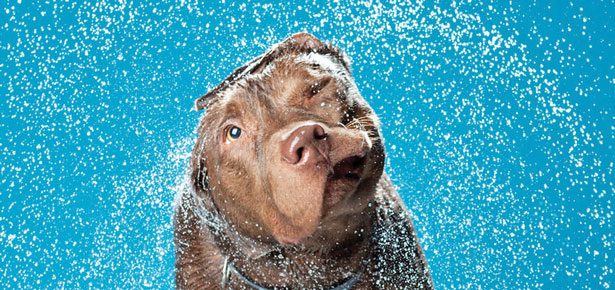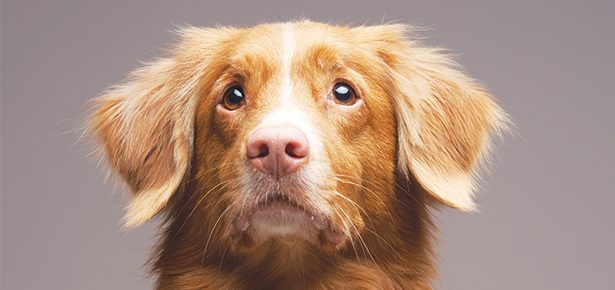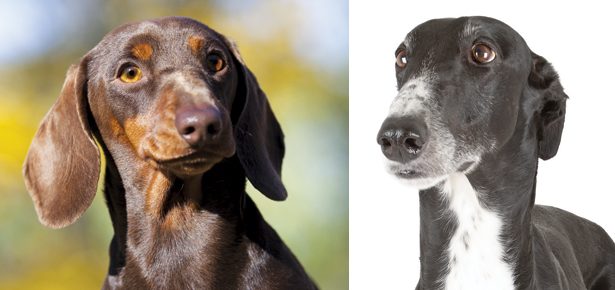

The Brussels Griffon
Teeny, tiny, and as good as it gets
It’s not easy to steal scenes from the likes of Jack Nicholson. But in the critically acclaimed ‘97 rom-com As Good As It Gets, a pint-sized dog manages to do just that. In the role of Verdell, an adorable pup became the film’s fourth major character. Virtually overnight, people were asking, “What kind of dog is that?” Those same people would soon discover what Brussels Griffon fanciers have known all along: this plucky pooch doesn’t just steal scenes—it steals hearts.
The American Brussels Griffon Association (ABGA) describes the roots of the breed as humble, dating back to the mid-1800s, when Belgian coachmen sought small terriers to control rat populations in stables. Belgian street dogs were bred with the German Affenpinscher to create a wire-coated stable dog known as the Griffons d’Ecurier. Over time, those Griffons were crossed with a variety of breeds, including the Pug, the black and tan King Charles Spaniel, and the English Toy Spaniel. The end result: today’s Brussels Griffon.
Appearance-wise, the breed is compact and sturdy. The Brussels Griffon weighs between eight and ten pounds, with the American Kennel Club (AKC) standard allowing for a maximum of 12 pounds. The breed’s coat comes in both rough and smooth varieties and allowable colours include red, black, black and tan, or beige. This intelligent and determined breed is loaded with personality, a trait evidenced by its humanlike facial expressions.
Today’s Brussels Griffon has a singular purpose—to serve as a loyal companion. Griffons are well-suited for the task, given how closely they bond with their owners. This could be the right breed for you, if you like the idea of a Velcro dog. You know the kind—those cuddle monsters that stick right by you and can’t imagine why you’d ever want to do anything without them. That describes the Brussels Griffon to a tee, and fanciers wouldn’t have it any other way. The flip side to such devotion is that the Brussels Griffon can be a tad shy around strangers. That’s not a problem, just a part of their nature that needs to be understood and respected.
Due to its compact size, the Brussels Griffon does not require extensive exercise. Daily walks will suffice. Those interested in pursuing other activities will find this intelligent breed responds well to training and can excel in conformation, obedience, agility, flyball, among other activities. As is the case with many Toy breeds, the process of house training the Brussels Griffon can be a bit of a challenge. You’ll need to be prepared for this, isolating your new pet to specific areas of your home and planning for a lot of potty breaks until your little companion is fully trained. Rest assured, your patience and perseverance will pay off. It’s a small price to pay for sharing your life with this special breed.
Finally, in terms of health, the Brussels Griffon is a hearty breed with a life expectancy of 10 to 15 years. All dogs have health conditions to contend with, though, and the Brussels Griffon is no exception. Syringomyelia, a disorder of the spinal cord, is noted as a concern in the breed; other issues such as patella luxation (dislocating knee caps), hip dysplasia, and eye disease are also occasionally found. The ABGA strongly supports health research and encourages responsible breeding practices. If you’re considering a Brussels Griffon, be sure to work with a reputable breeder and seek assurances of their commitment to the health and temperament of their dogs. And remember that no matter what breed you’re in search of, you can always find your purebred pup through a rescue group. Check petfinder.com or breed specific rescue groups like brusselsgriffonrescue.org.
The Brussels Griffon may not be right for everyone, but if you do open your heart and home to this small-but-mighty breed, you’ll soon learn what so many have already come to recognize— the Brussels Griffon truly is as good as it gets.
» Read Your Breed For more breed profiles, go to moderndogmagazine.com/breeds
Join the newsletter and never miss out on dog content again!
"*" indicates required fields
By clicking the arrow, you agree to our web Terms of Use and Privacy & Cookie Policy. Easy unsubscribe links are provided in every email.






